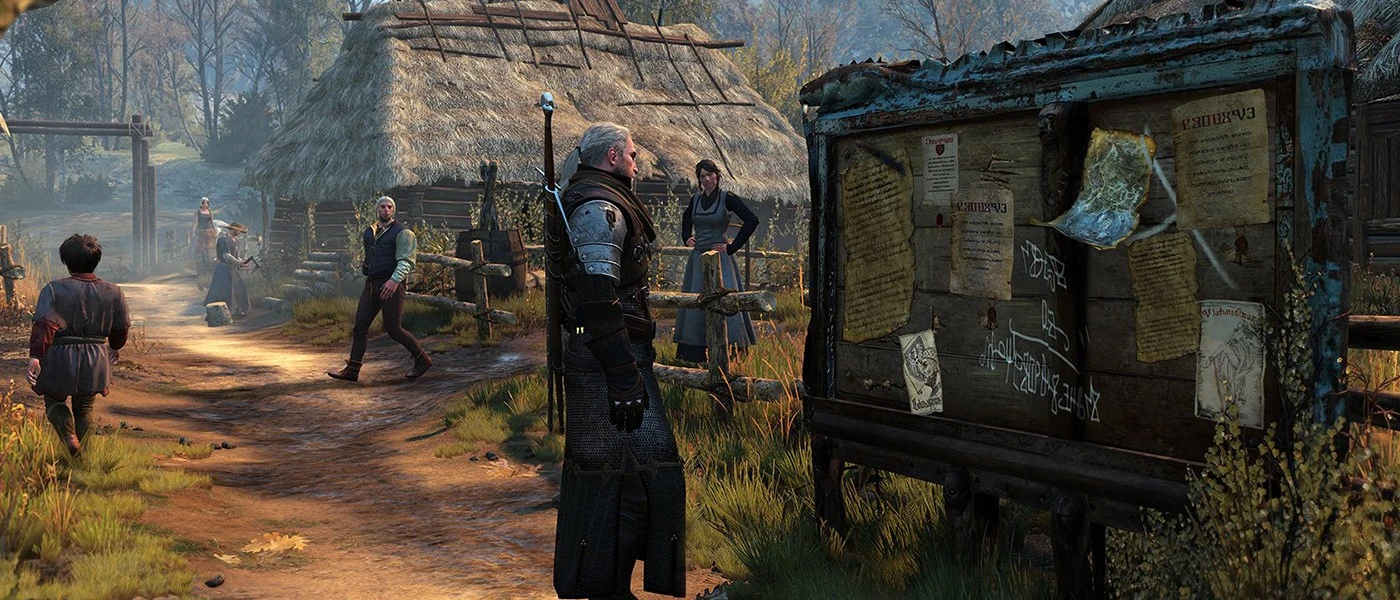The Witcher 3: Wild Hunt is a critically acclaimed action RPG that offers stunning visuals and immersive gameplay. However, some players have experienced graphics issues and low frame rates, particularly after the next-gen update. These performance issues can significantly impact the gaming experience, leading to stuttering, lag, and overall frustration.
Fortunately, there are several steps players can take to optimize their graphics settings and boost fps in The Witcher 3. This guide will walk through understanding the various graphics options, finding the best settings for your system, and additional tips and tricks to improve performance. By following these recommendations, players can enjoy the breathtaking world of The Witcher 3 without sacrificing visual quality or smooth gameplay.
Understanding Graphics Settings
The Witcher 3: Wild Hunt offers a wide range of graphics settings that can significantly impact both visual quality and performance. To optimize your gaming experience, it's essential to understand what each setting does and how it affects the game's performance.
Graphics Settings Breakdown
-
Texture Quality: Controls the resolution and detail of textures in the game. Higher settings result in sharper and more detailed textures but require more VRAM.
-
Foliage Visibility Range: Determines the distance at which foliage (grass, trees, etc.) is rendered. Higher settings increase the draw distance but can heavily impact performance.
-
Shadow Quality: Adjusts the resolution and quality of shadows. Higher settings produce more detailed and realistic shadows but can decrease frame rates.
-
Terrain Quality: Governs the level of detail and tessellation of terrain elements like hills and mountains. Higher settings enhance the visual quality of landscapes but may impact performance.
-
Water Quality: Controls the quality and detail of water surfaces, including ripples, reflections, and wave effects. Higher settings improve the appearance of water but have a minimal impact on performance.
-
Ambient Occlusion: Determines the quality of ambient occlusion, which adds depth and realism to shadows. HBAO+ is a higher quality option compared to SSAO but comes with a performance cost.
-
Nvidia Hairworks: Enhances the rendering of hair and fur on characters and animals. Enabling Hairworks can significantly reduce frame rates, especially on AMD GPUs.
Impact on Performance
| Setting | Performance Impact |
|---|---|
| Texture Quality | Low |
| Foliage Visibility Range | High |
| Shadow Quality | Medium |
| Terrain Quality | Low |
| Water Quality | Low |
| Ambient Occlusion | Medium |
| Nvidia Hairworks | Very High |
As seen in the table above, settings like Foliage Visibility Range and Nvidia Hairworks have the most significant impact on performance. Lowering these settings can provide substantial frame rate improvements, especially on lower-end hardware.
On the other hand, settings like Texture Quality, Terrain Quality, and Water Quality have a relatively low impact on performance. These settings can often be set to higher values without causing major frame rate drops.
By understanding the role of each graphics setting and its impact on performance, players can fine-tune their settings to achieve the best balance between visual quality and smooth gameplay in The Witcher 3.
Optimizing Your Settings
Once you have a solid understanding of the graphics settings in The Witcher 3, it's time to optimize them for the best balance between visual quality and performance. Here are some key areas to focus on:
Post-Processing Adjustments
-
Motion Blur: Disabling motion blur can provide a slight performance boost without significantly impacting visual quality. It can also reduce the perceived blurriness during fast-paced gameplay.
-
Bloom and Light Shafts: These effects add a sense of atmosphere to the game world but can be disabled for a small fps gain if needed.
-
Depth of Field, Chromatic Aberration, and Vignetting: These post-processing effects have a minimal impact on performance. Experiment with enabling or disabling them based on your personal preference.
Graphics Quality Tweaks
| Setting | Recommendation
Improving Frame Rate
After optimizing your graphics settings, there are a few additional steps you can take to further improve frame rates in The Witcher 3. These techniques can help stabilize performance and provide a smoother gameplay experience, especially on lower-end hardware.
Limiting FPS
One effective method to stabilize frame rates is to set an artificial frame rate cap. By identifying your system's lowest average frame rate and capping the FPS to that value, you can prevent the frame rate from fluctuating and reduce stuttering. Here's how to do it:
- Open the Witcher 3's user settings file located in your "My Documents" folder.
- Use a text editor like Notepad to open the file.
- Find the line that reads "limitFPS=60" (or your current Vsync cap).
- Change the value to your desired frame rate cap (e.g., "limitFPS=40" for a 40 FPS cap).
- Save the file and launch the game.
By setting a frame rate cap slightly below your average FPS, you can ensure a more consistent and smooth gameplay experience.
Reducing Resolution
Another way to boost performance is by lowering the game's resolution. Reducing the number of pixels your GPU needs to render can significantly improve frame rates. Consider the following:
| Resolution | Performance Impact |
|---|---|
| 1920x1080 | High |
| 1600x900 | Medium |
| 1366x768 | Low |
Experiment with different resolutions to find the best balance between visual quality and performance for your system.
Disabling Vsync and Hairworks
Two settings that can have a substantial impact on frame rates are Vsync and Nvidia Hairworks. Disabling these options can provide a noticeable performance boost.
-
Vsync: Vsync synchronizes the game's frame rate with your monitor's refresh rate, preventing screen tearing. However, it can also limit performance. Disabling Vsync can improve frame rates, although it may introduce some screen tearing.
-
Nvidia Hairworks: This setting enhances the appearance of hair and fur on characters and animals but comes with a significant performance cost. Disabling Hairworks can lead to substantial FPS gains, especially on AMD GPUs.
By combining these techniques with optimized graphics settings, you can significantly improve frame rates and overall performance in The Witcher 3. Experiment with different combinations to find the best balance for your system, ensuring a smooth and enjoyable gaming experience.
Additional Tips and Tricks
In addition to optimizing in-game settings, there are several Windows and driver-level tweaks that can further enhance performance in The Witcher 3. These tips and tricks can help reduce stuttering, minimize frame time spikes, and improve overall smoothness.
Windows and Driver Optimizations
-
Update Graphics Drivers: Ensure that you have the latest GPU drivers installed for your system. Updated drivers often include performance optimizations and bug fixes that can significantly improve gaming performance.
-
Install Latest DLSS DLL (Nvidia RTX GPUs): Download and install the latest DLSS DLL file from https://www.techpowerup.com/download/nvidia-dlss-dll. Extract the
nvngx_dlss.dllfile to the game'sbin/x64_dx12folder, replacing the existing file. -
Disable Control Flow Guard (CFG): CFG is a security feature that can sometimes cause performance issues in games. To disable it for The Witcher 3:
- Open Windows Defender settings and locate the
witcher3.exefile in thex64_d12folder (orx64for DX11 mode). - Disable CFG for the executable.
- More information: https://www.techpowerup.com/forums/threads/windows-10-fixes-various-games-stuttering.258819/
- Open Windows Defender settings and locate the
Game Mode and Overlays
-
Enable Game Mode: Windows 10 and 11 include a Game Mode feature that optimizes system performance for gaming. To enable it:
- Press the Windows key and type "Game Mode".
- Click on "Game Mode settings" and toggle it on.
-
Disable Steam, GOG, and Other Overlays: In-game overlays from platforms like Steam and GOG can sometimes impact performance. To disable them:
- For Steam: Right-click on the game in your library, select "Properties", and uncheck "Enable the Steam Overlay while in-game".
- For GOG: Click on the settings icon (top-left corner) > Settings > Game Features, and untick the "Overlay" box.
- For other programs, consult their respective settings or documentation.
-
Disable GeForce Experience Overlay: If you have an Nvidia GPU and GeForce Experience installed, disable its in-game overlay:
- Open GeForce Experience, click on the settings icon (gear icon), and uncheck "In-Game Overlay".
By implementing these Windows and driver optimizations, as well as disabling unnecessary overlays, you can potentially gain additional performance improvements in The Witcher 3. Remember to experiment and find the combination of settings that works best for your specific system and hardware configuration.
Conclusion
The Witcher 3: Wild Hunt is a visually stunning game that can be demanding on hardware, but with the right optimizations, players can enjoy a smooth and immersive gaming experience. By understanding the impact of various graphics settings, finding the right balance between visual quality and performance, and implementing additional tweaks, players can significantly improve frame rates and overall stability. Experimenting with different combinations of settings is key to finding the sweet spot for your specific system.
While the process of optimizing The Witcher 3 may seem daunting at first, the rewards are well worth the effort. By following the tips and tricks outlined in this guide, players can fully immerse themselves in the rich and captivating world of The Witcher 3, without the frustration of performance issues holding them back. So, take the time to fine-tune your settings, and embark on an unforgettable journey through the land of The Continent.
FAQs
1. What causes low FPS in games even with a good graphics card?
The primary reason for experiencing low FPS despite having a powerful graphics card is often due to the graphics settings being set too high, which creates a workload that exceeds what your hardware is capable of managing efficiently.
2. What are some tips to enhance the frame rate in Witcher 3?
To slightly improve the frame rate in Witcher 3 without significantly affecting the visuals, consider the following adjustments:
- Disable Bloom.
- Reduce Shadow Quality slightly, but not completely.
- Decrease Terrain Quality.
- Lower the Grass Density.
- Turn off VSync.
3. How can I reduce lag in Witcher 3?
To make Witcher 3 run smoother and reduce lag, setting a cap on the FPS can be very effective. This helps manage game stuttering, which is often mistaken for lag in offline games.
4. How can I improve the graphics quality in Witcher 3?
For optimal graphics in Witcher 3, adjust your settings to:
- Turn off V-sync.
- Set the Framerate limit to Unlimited.
- Use Fullscreen mode.
- Set Background characters to High.
- Set Shadow quality to Ultra.
- Set Water quality to Ultra.
- Increase Foliage visibility to High.
- Set Grass density to Ultra.






Comments